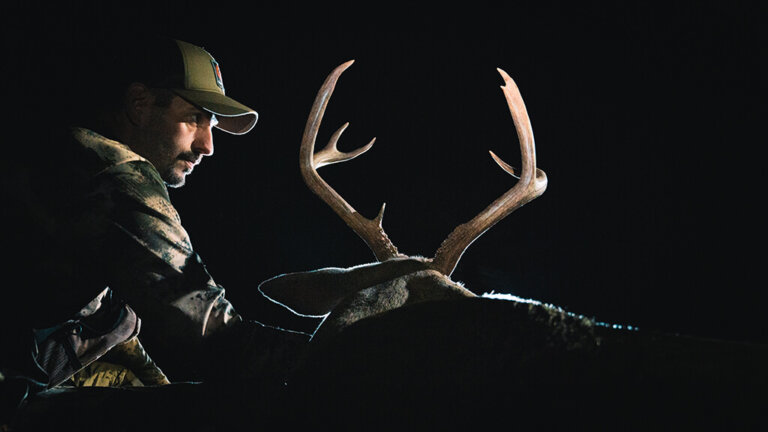For the 3rd fall in a row, I found myself hunting in southern Oregon. This time I brought along my trusty Gunwerks Muzzleloader in pursuit of a Columbia Blacktail. Flashing back to 2018, I was also hunting Columbia Blacktails, in this very same area of Oregon but I was then using my Gunwerks 7LRM rifle. I was successful and got a great buck. Last year I brought my rifle to the early hunting season for a rare Columbia Whitetail and was able to take a great one. I guess I am in love with the deer hunting in southern Oregon. Travel by air from Michigan to Oregon is quite easy but this year’s travel was not normal due to the Covid situation. It was my first air trip since last February and it was weird seeing so few people and planes in the airports.
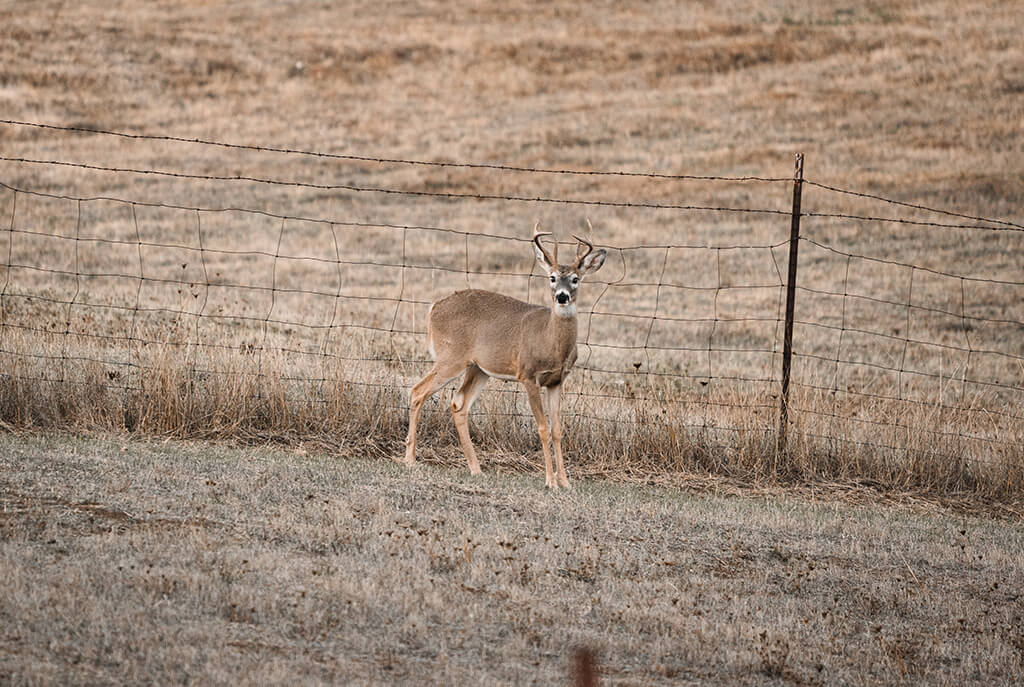
In 2018, when I was rifle hunting the same ranch for blacktails it was in October and the rut was on. Bucks were on the move chasing does. It was a matter of glassing to find the right buck on the move. On that hunt, we got up high to glass and caught bucks moving most of the day. On this trip hunting conditions would be completely different as it was early season with higher temperatures. Bucks would be sticking to food areas in an attempt to eat as much as possible to build up fat prior to the rut. The bucks would also be more concentrated around food and bedding areas and not spread out across the hills.
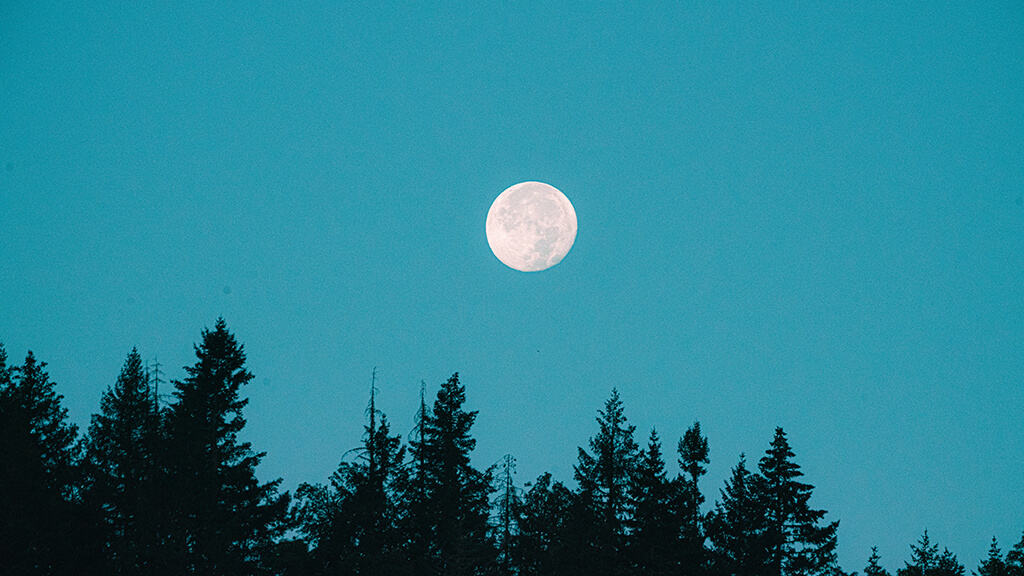
To be successful hunting the much warmer early season, you really need to focus on the first two hours and the last two hours of the day, as this is the time the deer are up and moving. That was our plan. The first morning my outfitter Rob took us to glass a big hillside that was fairly thick in the center area where deer bed down. There was also a handful of old wild apple trees towards the bottom of the hill. These trees were loaded up this year and had started dropping apples; these apples were like candy for the deer. As the sun started to rise, it didn’t take long for us to spot our first deer, a small group of does moving from the thicker cover down towards the apple trees. As we were watching this group, we caught the movement of another deer close by. We instantly knew it was a buck, and a good buck at that, because we could see the mass of his antlers pretty easily in the thick brush.
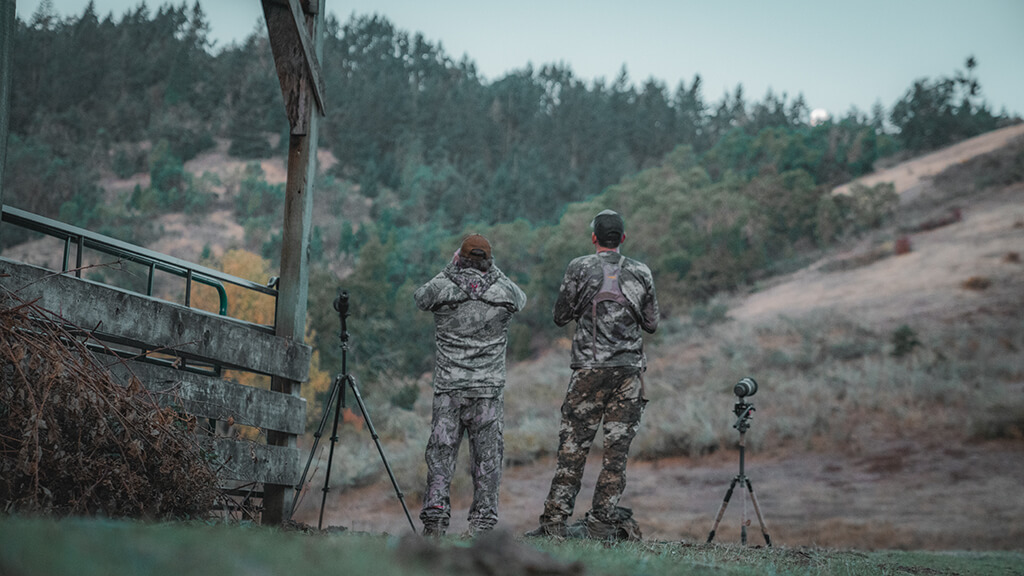
We set up the spotting scope on the buck. He was a giant 3×3 with some crab claws making up his 3rds. The mass was unreal on this buck and his body size was huge; we could instantly tell he was an old buck and a “no doubt shooter”. We continued to watch him to see what he was going to do. If he decided to go toward the apple trees, we could easily slip up the backside of the hill and get into position for a shot. Unfortunately, he didn’t head to the apple trees, but instead started working up the hill towards the thick cover. Perhaps he had already had his apple snacks in the middle of the night and was working back up to go to bed. We came up with a plan, which was to quickly sneak up high on the backside of the hill in an effort to cut him off before he disappeared into the thick cover.
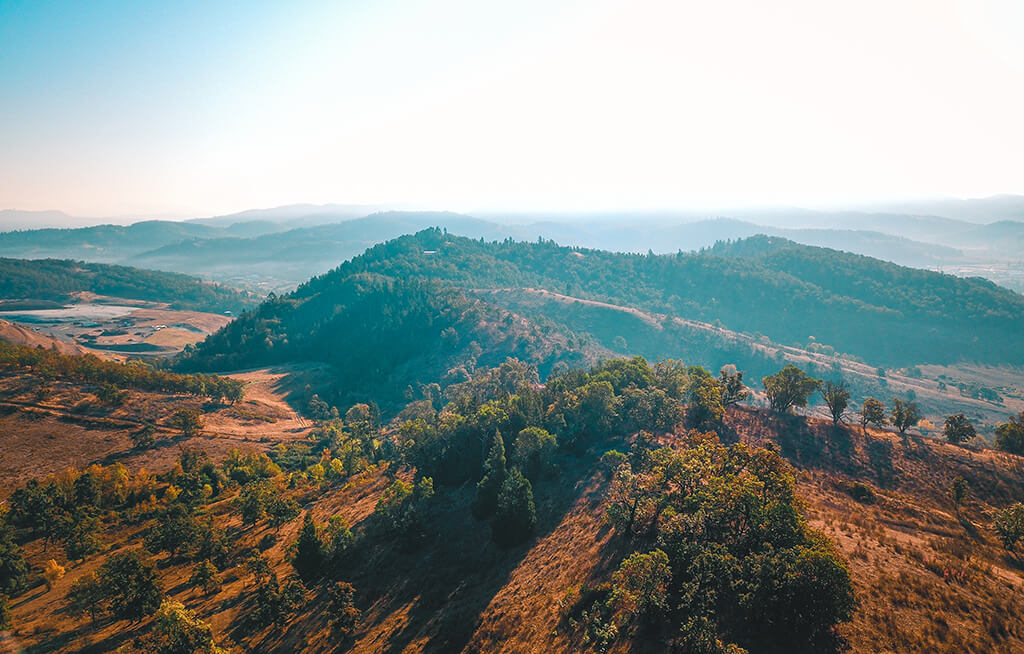
In describing this ranch, I use the word hills, as these aren’t quite tall enough to be mountains. But these hills are steep. There was no running up the steep hill in a few minutes. It took us about 45 minutes of hard climbing to top the hill and we spotted the buck behind some thick brush roughly 300 yards away. To get in position for the shot I moved into the prone position and got set up with my muzzleloader. Depending on which way he would walk out of the thick cover, I had a couple of good shooting lanes and some other areas where the shot would be much more difficult. After a little over 30 minutes he took the one direction out where I had no shot as there was too much brush. He walked away into the thick cover, not to be seen again this morning.
There is one big benefit of hunting early season, as compared to the rut. This deer was probably on the same pattern every day. We hadn’t bumped him, so he didn’t even know we were there. Being still in the same area, there was a very good chance he would come back out tonight and work the same food sources and maybe even the apple trees. We backed out and made a plan to be back in the same area in the evening. In this area of Oregon, during the early season, middle of the day temps hit the high 80’s with harsh sun beating down. This is the biggest negative of hunting early season. Evening deer movement is extremely late, either just before or just after sunset.
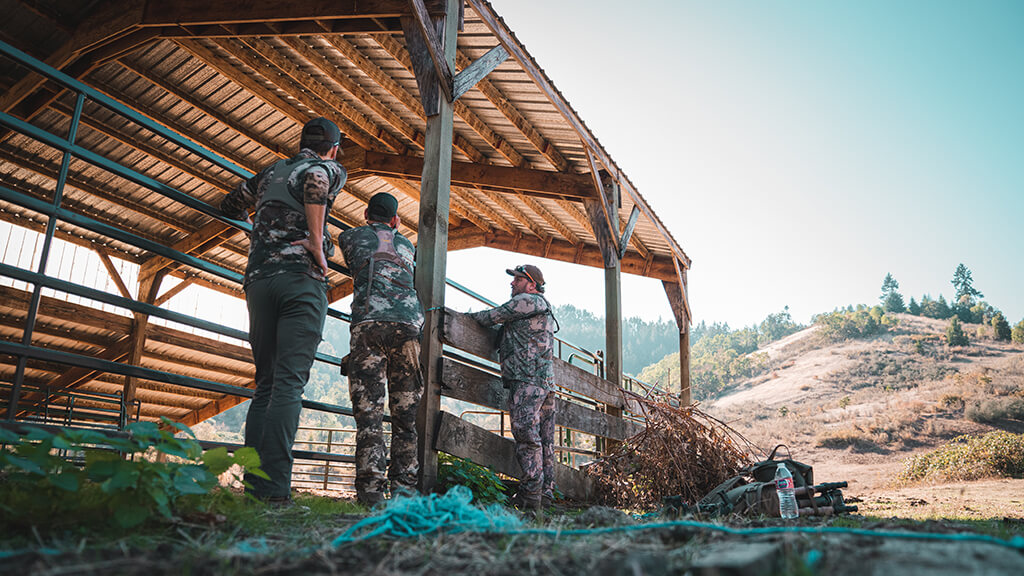
Arriving back at the base of the hill mid-afternoon, everything was quiet. It was so hot that not even the tweetie birds were out, so we made ourselves comfortable in the shade and spent the next couple of hours glassing up the hillside. With about 90 minutes left of daylight, we made the decision to move up the hill and set up about 150 yards away from the apple trees. With the high temps, we figured that any deer movement was going to come at last light and, if it happened, we needed to be in position. This turned out to be the decision that led to our success.
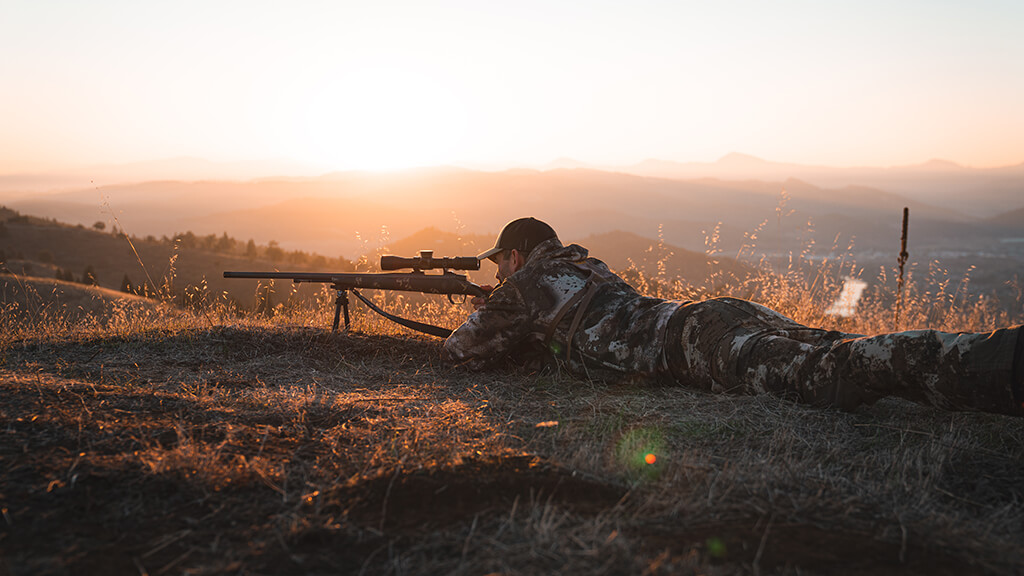
Having a chance to get my muzzleloader set up, cameras on tripods and all focused on the apple trees allowed us to react quickly if our buck stepped out. As the time went by and we got closer to dark, the sun fell behind the hill and everything came alive for the last 30 minutes. We started to spot deer moving on the hillside, not the buck we were after but a good sign that he might move. With about 15 minutes left of shooting, a small buck just appeared underneath the apple tree. Watching him, I could tell he was concentrating on another deer in the brush behind the tree. Every time he would move his head down to eat, he would glance back.
Just as the small buck had appeared, the big buck just appeared underneath the tree. His vitals were covered up by branches from the tree and he just needed to take a few more steps. After eating an apple, he took those steps. I let the muzzleloader bark. When the smoke cleared, he was laying right where he had been standing. We moved quickly to get to him before we lost all light.
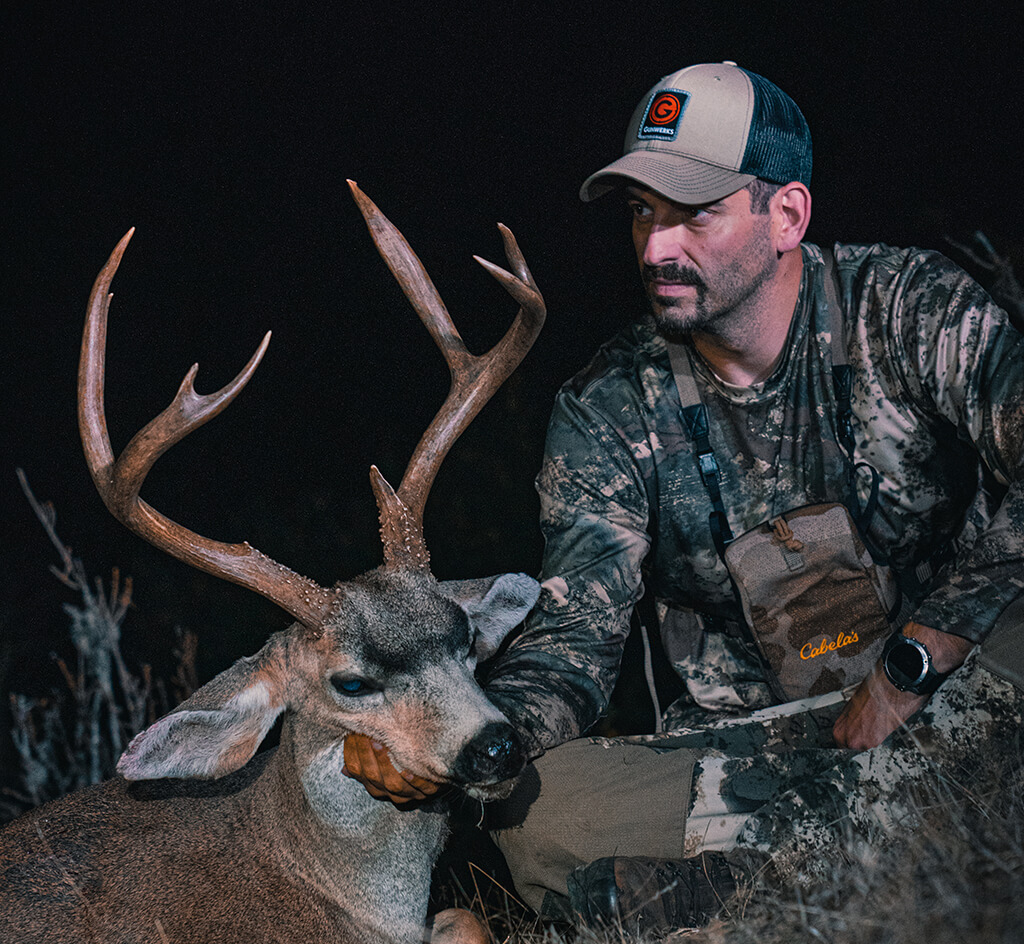
This old warrior was everything we thought he was. His body was huge, and the antler mass was insane for a Columbia blacktail. Although there was a major difference in hunting style between the 2018 rut hunt and the early season hunt this year, both hunts resulted in a couple of great Columbia blacktails. There is just something about this area and about hunting with Rob that is extremely special. I’m already planning to come back in September of 2021, and I will again be bringing my muzzleloader along, but next for a Columbia whitetail.
I can’t wait. – Happy Hunting!
